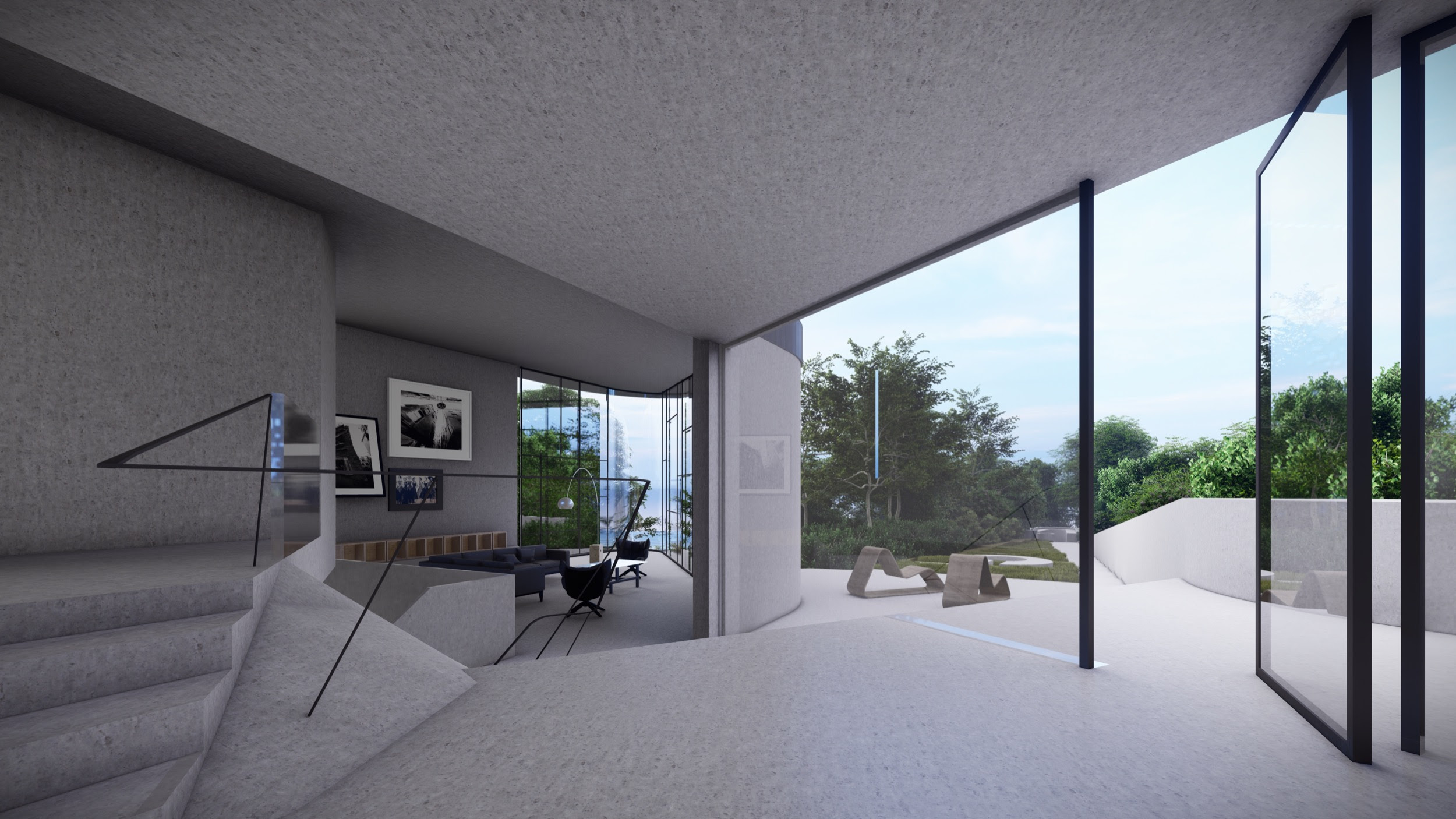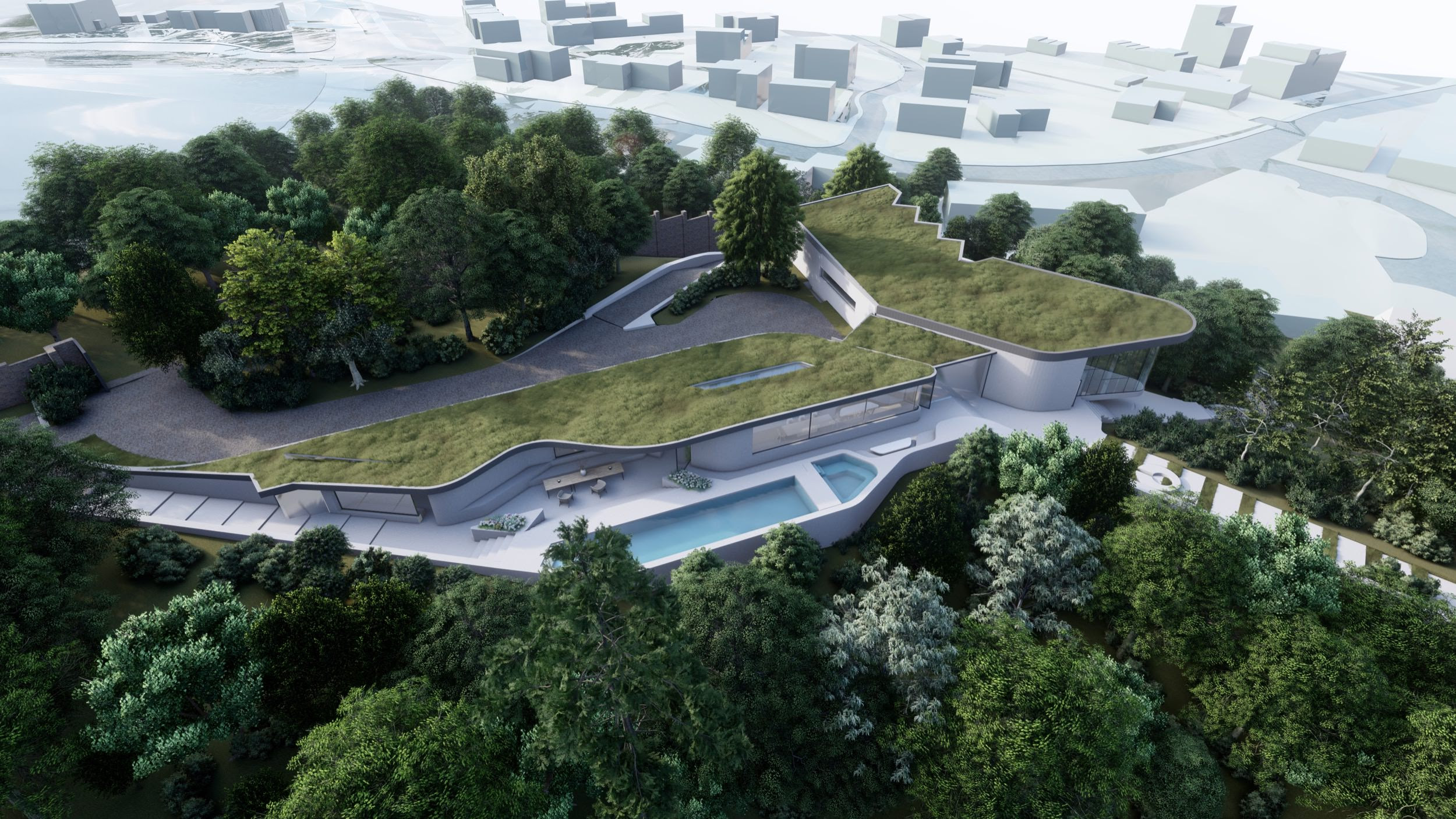Hollaway Studio, who were architects for the world’s first multi-storey skatepark – F51, in Folkestone and named one of the “10 coolest new buildings to gawp at this year” by the Times, has secured detailed planning consent for an entirely bespoke ‘Paragraph 80’* dwelling at a historic site in Upnor, Rochester, South East England.
Upnor Castle
A unanimous decision was made at committee to grant consent for Hollaway Studio’s Paragraph 80 house at Upnor, making this the first Paragraph 80 permission in the district. Situated within the historic Ordnance Yard site, in close proximity to Upnor Castle, this truly bespoke and one-of-a-kind home has been designed to sit sensitively within its surroundings, atop an elevated traverse, overlooking the River Medway.
As required by the demanding standards set by Paragraph 80, the proposal for this unique site underwent a rigorous design journey, comprising multiple reviews with Design South East, officers at Medway Council, and Historic England. This design process led to a proposal that represents the highest quality in architecture, helping to raise the standards of design in the surrounding area.
The site of the new dwelling was initially built as a fort on the strategic River Medway, part of a complex of Ordnance and ammunition storage originating at Upnor Castle.
A thoroughly developed landscape proposal by landscape architects and urban designers, Turkington Martin celebrates the notion of the flood wall. This demonstrates a clear understanding of the site’s defining characteristics that enhance the history of the site, whilst being integrated into its landscape. The design feature ensures the proposal is read as a walled landscape, a defensive boundary between the tidal river and the quay, in keeping with the fortress history of the site.

Largely hidden
Despite its high level positioning, the house itself will be largely hidden from view by retained tree cover and use of the existing topography to minimise building prominence.
The landscape on the higher ground would then graduate into a more open landscape, easily maintained and enhancing the landscape character of the site by extending into a central courtyard and secluded garden spaces. By establishing this clear hierarchy of landscaping elements, visibility is diminished, ensuring the proposal retains sensitivity of the surrounding local area.

The final proposal brings forward a house that sits comfortably within the topography of the site, wrapped in a protective wall that extends along the natural traverse to the restored bell tower, another nod to the historic on site features that remain.
Architecturally, the house is split into two main volumes, their differing heights echoing the hierarchy present in the landscape. The first housing a study, gym and generous kitchen/dining space that looks out onto outdoor dining space and a swimming pool. The north-east wing is split level offering a large double height living space and a master bedroom and three guest bedrooms.
Sustainability was at the forefront of this design process. Due to the particularly uneven site, the massing was developed to sit with the least amount of disruption to the existing landscape while taking into account the sun’s path and existing views so that the proposal can benefit from passive design while minimising its impact on what is existing. This understanding and underlaying of sensitive, site specific design is what has allowed such a considered, sustainable proposal to come to resolve.
Paragraph 80 has provided Hollaway Studio the opportunity to explore and experiment with the latest technologies such as solar panels, low carbon concrete, smart glass and skylights.
The resulting proposal is a highly sustainable building which will allow Medway to showcase the latest in innovative materials and construction, reinforcing the high level of design that is demonstrated in the proposal. Each stage has included vigorous testing of passive design solutions that allow Hollaway Studio to maximise the efficiency of the home while minimising the impact on the immediate and wider environments.
The resulting scheme strikes a balance by using a sophisticated passive design combined with technology where appropriate to create a forward-thinking new home.
This house, with its long term client, is a building built to last.
*What is Paragraph 80?
Paragraph 80 (previously Paragraph 79) of the National Planning Policy Framework (NPPF) is a unique piece of legislation that provides exceptional circumstances for allowing the construction of isolated dwellings within the countryside.
Usually, it’s impossible to make a case for building in areas of extraordinary natural beauty. And for good reason: it alters the shape and use of the land – permanently. Which makes this permission even more interesting as it meets the needs required for Paragraph 80.